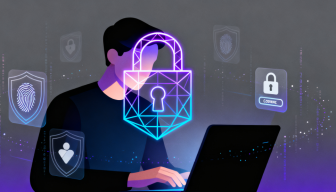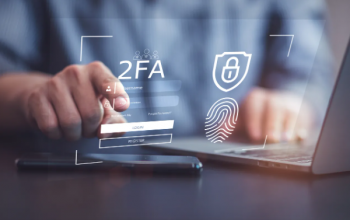In today’s connected world, security no longer starts or ends at the firewall. The rise of remote work, cloud computing, and mobile devices has blurred the line between “inside” and “outside” the corporate perimeter. For decades, VPNs (Virtual Private Networks) were seen as the default gateway to safety — a way to access internal systems securely. But as cyber threats evolve and data breaches become more sophisticated, the old model of trust has started to crumble.
Enter Zero Trust Networking, a framework that turns traditional assumptions upside down. Instead of trusting users or devices based on location or network, Zero Trust enforces one principle: “Never trust, always verify.” And while this approach was designed for enterprise environments, it has powerful implications for personal VPN users as well.
From Castle Walls to Checkpoints: The End of Implicit Trust
The traditional security model is often described as a “castle and moat.” Once inside the walls — the corporate network — everything is assumed to be safe. VPNs were the drawbridge: users authenticated once, crossed over, and gained access to everything inside.
But this model assumes that anyone who makes it past the drawbridge can be trusted. In reality, attackers can steal credentials, compromise endpoints, or exploit misconfigured VPN servers. Once inside, lateral movement is easy, and sensitive data can be exfiltrated without detection.

The explosion of cloud services and remote work has made this problem worse. Employees now access company data from home Wi-Fi networks, mobile hotspots, or shared devices. The idea of a single, protected “perimeter” no longer holds up. That’s where Zero Trust changes everything.
What Zero Trust Networking Really Means
Zero Trust is not a product, nor a single technology — it’s a security philosophy and architectural approach. The foundation rests on three main principles:
- Never trust, always verify.
Every access request — from a user, device, or application — must be authenticated and authorized continuously, not just once at login. - Least privilege access.
Users should only have access to the minimum resources required to perform their task. No more “full network access” just because you’re on a VPN. - Assume breach.
Zero Trust operates under the assumption that the network is already compromised. Therefore, every interaction is verified, monitored, and logged to contain potential damage.
In practical terms, Zero Trust shifts the focus from where a request originates (e.g., inside the VPN) to who and what is making the request, and why. This identity-centric model leverages strong authentication, device health checks, and behavioral analytics to make real-time access decisions.
The Shift from VPNs to ZTNA (Zero Trust Network Access)
In enterprise environments, VPNs once played a central role in remote connectivity. But they’re now giving way to a new model: Zero Trust Network Access (ZTNA).
Unlike traditional VPNs, which connect users to an entire internal network, ZTNA connects users only to specific applications or resources — based on verified identity and policy compliance. If a user’s device fails a health check, or their behavior deviates from normal patterns, access can be restricted automatically.
Key differences between VPN and ZTNA:
- VPN: Connects users to the network; implicit trust inside the perimeter.
- ZTNA: Connects users to applications; zero implicit trust.
- VPN: One-time authentication when connecting.
- ZTNA: Continuous authentication and context-aware verification.
- VPN: Limited visibility and access control once connected.
- ZTNA: Fine-grained policy enforcement per user, device, and session.
Major cloud providers and security firms — including Google (BeyondCorp), Microsoft, Okta, Cloudflare, and Zscaler — have adopted Zero Trust frameworks that eliminate the need for traditional VPN tunnels entirely.
Why Zero Trust Matters for Personal VPN Users
At first glance, Zero Trust might sound like something only large organizations need to worry about. But for everyday VPN users — those who rely on VPNs for privacy, streaming, or safe browsing — the concept is equally relevant.
Most people think of VPNs as a complete shield of security. You connect to a server, encrypt your traffic, and assume you’re safe. However, this mindset mirrors the old “castle and moat” logic — trusting the VPN provider and the network tunnel blindly.
Zero Trust thinking challenges that assumption. Even with a VPN, users should remain skeptical of every connection and every intermediary. Here’s how Zero Trust principles can improve personal digital hygiene:
- Verify before you trust.
Research your VPN provider’s policies. Does it log user activity? Who owns the company? Where are its servers located? A Zero Trust mindset means you verify before granting trust — even to your VPN. - Use multifactor authentication (MFA).
If your VPN service supports account-level MFA, enable it. This protects against credential theft, one of the most common forms of attack. - Limit your exposure.
Avoid leaving your VPN connected 24/7 on untrusted networks. Disconnect when not needed, and avoid using public Wi-Fi without a secure VPN tunnel and endpoint protection. - Combine layers.
A VPN should be part of a broader personal security stack — alongside encrypted DNS (DoH/DoT), device firewalls, browser isolation, and regular software updates. - Assume compromise.
Even the best VPN could be breached. Store minimal personal data with your provider and use different credentials than for your email or financial accounts.
By adopting a Zero Trust mindset, you move from blind trust to active security.
The Privacy Connection: Trust Is the Weakest Link
VPNs promise privacy, but many fail to deliver. Some “free” VPNs log browsing data or sell user information to advertisers — directly violating the trust users place in them. In the Zero Trust model, such a provider would fail the very first test of credibility.
In practical terms, Zero Trust for individuals means:
- Trusting no single service to protect your privacy entirely;
- Diversifying your security tools;
- Using open-source or audited providers when possible;
- Periodically reviewing permission settings on all connected apps and services.
This proactive approach not only strengthens security but also helps users understand that “encrypted” does not mean “safe” unless the entire trust chain — from endpoint to provider — is verified.
The Enterprise Impact: What’s Replacing Traditional VPNs
For organizations, Zero Trust is more than just a buzzword — it’s a strategic shift. Traditional VPN infrastructures are increasingly being replaced by cloud-native solutions that integrate identity, device posture, and policy controls.
Frameworks like SASE (Secure Access Service Edge) and ZTNA (Zero Trust Network Access) are reshaping how businesses connect users to data. Instead of building thicker walls, these models build smarter gates — dynamic, adaptive, and identity-driven.
Employees logging in from home no longer “enter” the network via VPN; instead, they connect securely to the exact app or data source they’re authorized to use. This not only reduces the attack surface but also simplifies IT management and compliance auditing.
Many organizations report that after adopting Zero Trust, they experience fewer lateral-movement breaches, faster threat detection, and improved visibility across endpoints.
What the Future Looks Like: VPN Evolution Under Zero Trust
The VPN industry itself is adapting to this paradigm shift. Premium VPN providers are beginning to integrate Zero Trust elements — such as identity-based access, device health verification, and contextual session management — into their platforms.
We are likely moving toward a hybrid model where personal VPNs become “Zero Trust-ready”, meaning they verify both endpoints and continuously validate user identity before maintaining a connection.
In the coming years, the following trends will shape how VPNs evolve:
- Identity-first connections: Authentication tied to user identity, not IP or location.
- Adaptive security policies: Real-time risk scoring for devices and sessions.
- Privacy compliance: Transparent auditing and verifiable no-log systems.
- Integration with decentralized identity frameworks (DID): Allowing users to carry verifiable credentials across services.
As these features mature, the line between corporate ZTNA and consumer VPNs will blur.
Adopting a Zero Trust Mindset as a User
You don’t need enterprise infrastructure to think like a Zero Trust architect. Start small:
- Treat every new connection or service as potentially risky until verified.
- Rotate passwords, enable MFA, and monitor account access regularly.
- Keep your VPN client, browser, and OS updated.
- Avoid extensions and plugins that request excessive permissions.
- Use reputable endpoint protection software that complements your VPN.
Ultimately, Zero Trust is less about tools and more about attitude. It’s the mindset that nothing — not even your VPN — deserves unconditional trust.
Conclusion: Security Is No Longer About Walls, But About Verification
Zero Trust Networking is not the end of VPNs; it’s their evolution. The framework redefines what “secure access” really means in a world where everyone and everything is connected.
For enterprises, it’s a way to eliminate implicit trust and minimize risk. For personal users, it’s a reminder that privacy tools are only as trustworthy as the principles behind them.
In the Zero Trust era, security is no longer about hiding behind encrypted walls — it’s about verifying every connection, every device, and every provider in your digital life.
By thinking critically, authenticating continuously, and limiting blind trust, personal VPN users can bring enterprise-grade discipline to their everyday privacy practices.

Zero Trust isn’t just a corporate buzzword. It’s the new common sense for digital survival.


